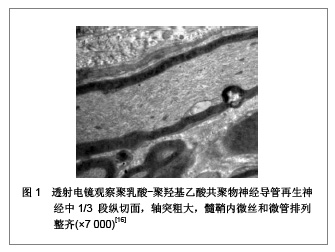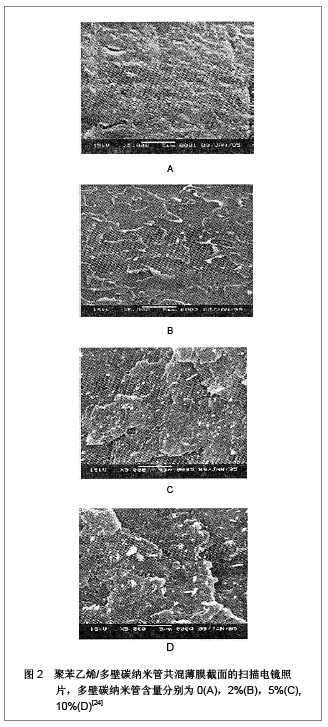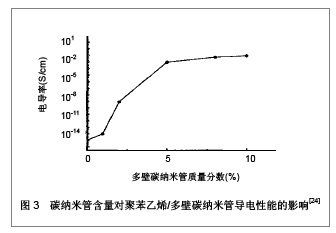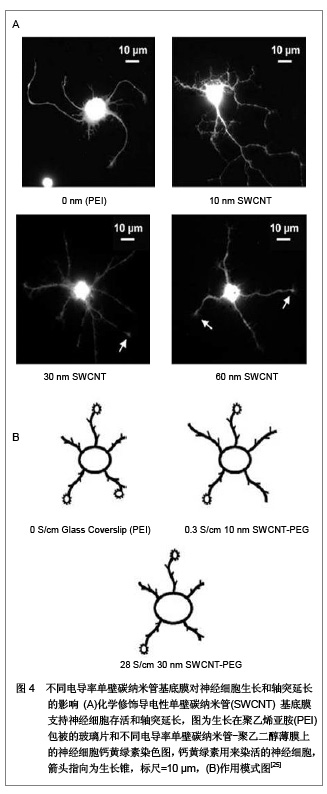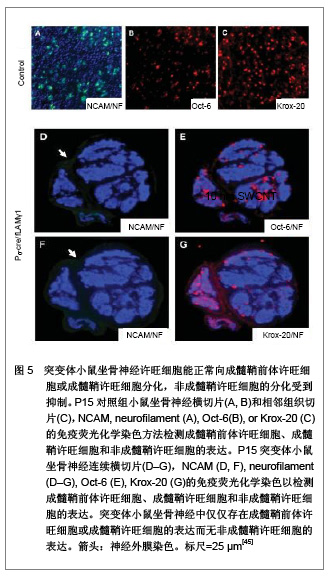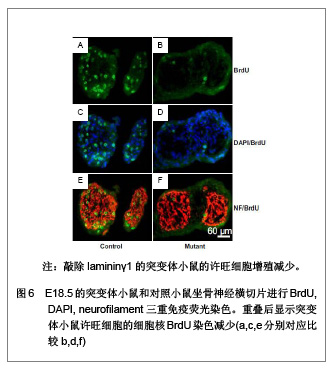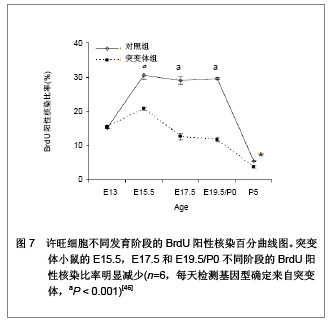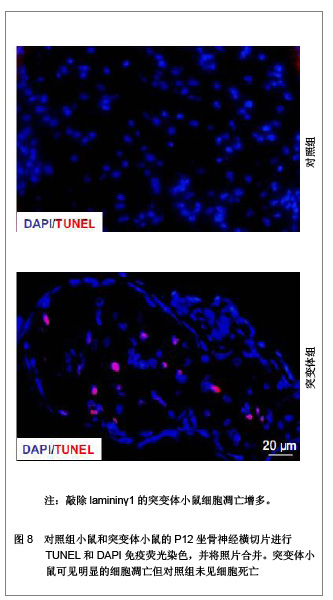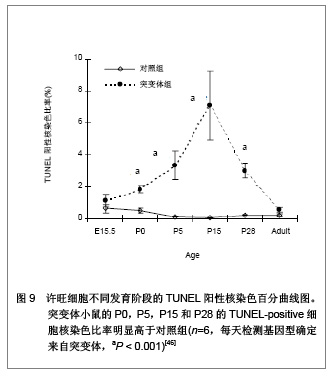| [1] Kim IY, Seo SJ, Moon HS,et al. Chitosan and its derivatives for tissue engineering applications. Biotechnol Adv. 2008; 26(1): 1-21.[2] Yao L, de Ruiter GC, Wang H, et al. Controlling dispersion of axonal regeneration using a multichannel collagen nerve conduit. Biomaterials. 2010;31(22):5789-5797.[3] Heath CA, Rutkowski GE.The development of bioartificial nerve grafts for peripheral-nerve regeneration.Trends Biotechnol. 1998;16(4):163-168.[4] Freed LE, Vunjak-Novakovic G, Biron RJ, et al. Biodegradable polymer scaffolds for tissue engineering. Biotechnology (N Y). 1994;12(7):689-693.[5] Kim BS, Mooney DJ. Development of biocompatible synthetic extracellular matrices for tissue engineering.Trends Biotechnol. 1998;16(5):224-230.[6] Lundborg G, Dahlin L, Dohi D, et al. A new type of "bioartificial" nerve graft for bridging extended defects in nerves. J Hand Surg Br. 1997;22(3):299-303.[7] Dellon AL, Mackinnon SE. An alternative to the classical nerve graft for the management of the short nerve gap. Plast Reconstr Surg. 1988;82(5):849-856.[8] Mackinnon SE, Dellon AL. Clinical nerve reconstruction with a bioabsorbable polyglycolic acid tube. Plast Reconstr Surg. 1990;85(3):419-424.[9] den Dunnen WF, van der Lei B, Schakenraad JM, et al. Poly(DL-lactide-epsilon-caprolactone) nerve guides perform better than autologous nerve grafts. Microsurgery. 1996; 17(7):348-357.[10] 张森林,孟昭业.含神经生长因子的几丁质管桥接兔面神经缺损的实验研究[J].中国修复重建外科杂志,2000,14(6):340-342.[11] Stanec S, Stanec Z. Reconstruction of upper-extremity peripheral-nerve injuries with ePTFE conduits. J Reconstr Microsurg. 1998;14(4):227-232.[12] Mao JS, Cui YL, Wang XH, et al. A preliminary study on chitosan and gelatin polyelectrolyte complex cytocompatibility by cell cycle and apoptosis analysis. Biomaterials. 2004;25 (18):3973-3981.[13] 矫树生,李兵仓,陈建梅,等.嗅鞘细胞与聚乳酸-聚羟基乙酸共聚物材料的细胞相容性研究[J].第三军医大学学报,2008,30(5): 370-373.[14] 苟三怀,侯春林,臧鸿声,等.几丁质室内植入雪旺氏细胞对神经再生影响的实验研究[J].中国修复重建外科杂志, 1995, 9(2):108.[15] Li BC, Jiao SS, Xu C,et al. PLGA conduit seeded with olfactory ensheathing cells for bridging sciatic nerve defect of rats. J Biomed Mater Res A. 2010;94(3):769-780.[16] 李志跃,李际才,赵群. 聚乳酸聚羟基乙酸共聚物三维神经导管修复周围神经缺损[J].中国组织工程研究与临床康复,2010, 14(34):6313-6318.[17] Cao W, Cheng M, Ao Q,et al. Physical, mechanical and degradation properties, and schwann cell affinity of cross-linked chitosan films.J Biomater Sci Polym Ed. 2005; 16(6):791-807.[18] Yuan Y, Zhang P, Yang Y, et al. The interaction of Schwann cells with chitosan membranes and fibers in vitro. Biomaterials. 2004;25(18):4273-4278.[19] 敖强,王爱军,孙志刚,等. 一种壳聚糖神经组织工程支架的制备及表征[J]. 中国组织工程研究与临床康复,2008,12(1):47-50.[20] Kotwal A, Schmidt CE. Electrical stimulation alters protein adsorption and nerve cell interactions with electrically conducting biomaterials. Biomaterials. 2001;22(10):1055-1064.[21] Schmidt CE, Shastri VR, Vacanti JP, et al. Stimulation of neurite outgrowth using an electrically conducting polymer. Proc Natl Acad Sci U S A. 1997;94(17):8948-8953.[22] De Giglio E, Sabbatini L, Zambonin PG. Development and analytical characterization of cysteine-grafted polypyrrole films electrosynthesized on Pt- and Ti-substrates as precursors of bioactive interfaces. J Biomater Sci Polym Ed. 1999;10(8):845-858.[23] Runge MB, Dadsetan M, Baltrusaitis J,et al. Development of Electrically Conductive Oligo(polyethylene glycol) Fumarate-Polypyrrole Hydrogels for Nerve Regeneration. Biomacromolecules. 2010. [Epub ahead of print][24] 赵金安.溶液共混法制备聚苯乙烯/多壁碳纳米管复合导电材料[J].化学研究与应用,2007,19(2):224-226.[25] Malarkey EB, Fisher KA, Bekyarova E, et al. Conductive single-walled carbon nanotube substrates modulate neuronal growth. Nano Lett. 2009;9(1):264-268.[26] Lee JY, Bashur CA, Goldstein AS,et al. Polypyrrole-coated electrospun PLGA nanofibers for neural tissue applications. Biomaterials. 2009;30(26):4325-4335.[27] Wang S, Cai Q, Hou J, et al. Acceleration effect of basic fibroblast growth factor on the regeneration of peripheral nerve through a 15-mm gap. J Biomed Mater Res A. 2003; 66(3):522-531.[28] Li WJ, Laurencin CT, Caterson EJ, et al. Electrospun nanofibrous structure: a novel scaffold for tissue engineering. J Biomed Mater Res. 2002;60(4):613-621.[29] Kwon IK, Kidoaki S, Matsuda T.Electrospun nano- to microfiber fabrics made of biodegradable copolyesters: structural characteristics, mechanical properties and cell adhesion potential.Biomaterials. 2005;26(18): 3929-3939.[30] Lee YH, Lee JH, An IG,et al. Electrospun dual-porosity structure and biodegradation morphology of Montmorillonite reinforced PLLA nanocomposite scaffolds. Biomaterials. 2005;26(16):3165-3172.[31] Currey J D.Bones:Structure and Mechanics. Princeton,NJ:Princeton University Press,2002.[32] Chang CJ.The effect of pulse-released nerve growth factor from genipin-crosslinked gelatin in schwann cell-seeded polycaprolactone conduits on large-gap peripheral nerve regeneration.Tissue Eng Part A. 2009;15(3):547-557.[33] Levi-Montalcini R.The nerve growth factor: thirty-five years later. EMBO J. 1987;6(5):1145-1154.[34] Petruska JC, Mendell LM.The many functions of nerve growth factor: multiple actions on nociceptors. Neurosci Lett. 2004; 361(1-3):168-171.[35] Campbell WW. Evaluation and management of peripheral nerve injury.Clin Neurophysiol. 2008;119(9):1951-1965.[36] Apfel SC, Kessler JA, Adornato BT, et al. Recombinant human nerve growth factor in the treatment of diabetic polyneuropathy. NGF Study Group. Neurology. 1998; 51(3): 695-702.[37] Luo J, West JR, Pantazis NJ. Nerve growth factor and basic fibroblast growth factor protect rat cerebellar granule cells in culture against ethanol-induced cell death. Alcohol Clin Exp Res. 1997;21(6):1108-1120.[38] Yang Y, De Laporte L, Rives CB, et al. Neurotrophin releasing single and multiple lumen nerve conduits. J Control Release. 2005;104(3):433-446.[39] Fisher J, Levkovitch-Verbin H, Schori H, et al. Vaccination for neuroprotection in the mouse optic nerve: implications for optic neuropathies. J Neurosci. 2001;21(1):136-142.[40] Sinis N, Schaller HE, Schulte-Eversum C, et al. Nerve regeneration across a 2-cm gap in the rat median nerve using a resorbable nerve conduit filled with Schwann cells. J Neurosurg. 2005;103(6):1067-1076.[41] Aszmann OC, Korak KJ, Luegmair M,et al. Bridging critical nerve defects through an acellular homograft seeded with autologous schwann cells obtained from a regeneration neuroma of the proximal stump. J Reconstr Microsurg. 2008; 24(3):151-158.[42] Bryan DJ, Wang KK, Chakalis-Haley DP. Effect of Schwann cells in the enhancement of peripheral-nerve regeneration. J Reconstr Microsurg. 1996;12(7):439-446.[43] Nadim W, Anderson PN, Turmaine M.The role of Schwann cells and basal lamina tubes in the regeneration of axons through long lengths of freeze-killed nerve grafts. Neuropathol Appl Neurobiol. 1990;16(5):411-421.[44] Yu WM, Yu H, Chen ZL. Laminins in peripheral nerve development and muscular dystrophy. Mol Neurobiol. 2007; 35(3):288-297.[45] Yu WM, Yu H, Chen ZL, et al. Disruption of laminin in the peripheral nervous system impedes nonmyelinating Schwann cell development and impairs nociceptive sensory function. Glia. 2009;57(8):850-859.[46] Yu WM, Feltri ML, Wrabetz L, et al. Schwann cell-specific ablation of laminin gamma1 causes apoptosis and prevents proliferation. J Neurosci.2005;25:4463-4472.[47] Matsumoto K, Ohnishi K, Sekine T, et al. Use of a newly developed artificial nerve conduit to assist peripheral nerve regeneration across a long gap in dogs. ASAIO J. 2000; 46(4):415-420.[48] Cheng B, Chen Z. Fabricating autologous tissue to engineer artificial nerve. Microsurgery. 2002;22(4):133-137.[49] 丁坦.纳米银组织工程外周神经支架对坐骨神经缺损修复的实验研究[D].西安:第四军医大学,2009.[50] Verdú E, Labrador RO, Rodríguez FJ,et al. Alignment of collagen and laminin-containing gels improve nerve regeneration within silicone tubes. Restor Neurol Neurosci. 2002;20(5):169-179.[51] Hung RJ, Yazdani U, Yoon J, et al. Mical links semaphorins to F-actin disassembly. Nature. 2010;463(7282):823-827.[52] Zheng L, Cui HF.Use of chitosan conduit combined with bone marrow mesenchymal stem cells for promoting peripheral nerve regeneration. J Mater Sci Mater Med. 2010;21(5): 1713-1720.[53] Jiang B, Zhang P, Jiang B.Advances in small gap sleeve bridging peripheral nerve injury. Artif Cells Blood Substit Immobil Biotechnol. 2010;38(1):1-4.[54] Shi W, Yao J, Chen X,et al. The delayed repair of sciatic nerve defects with tissue-engineered nerve grafts in rats. Artif Cells Blood Substit Immobil Biotechnol. 2010;38(1):29-37.[55] de Ruiter GC, Onyeneho IA, Liang ET, et al. Methods for in vitro characterization of multichannel nerve tubes. J Biomed Mater Res A. 2008;84(3):643-651.[56] Jiang B, Zhang P, Zhang D, et al. Study on small gap sleeve bridging peripheral nerve injury. Artif Cells Blood Substit Immobil Biotechnol. 2006;34(1):55-74. |
